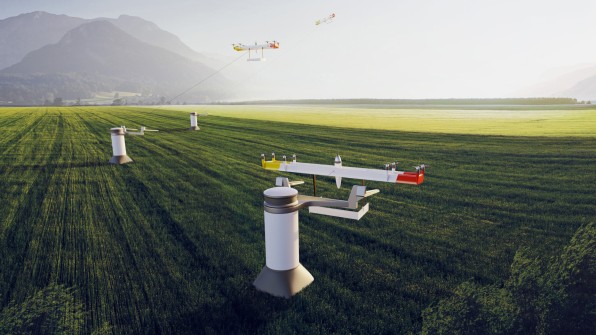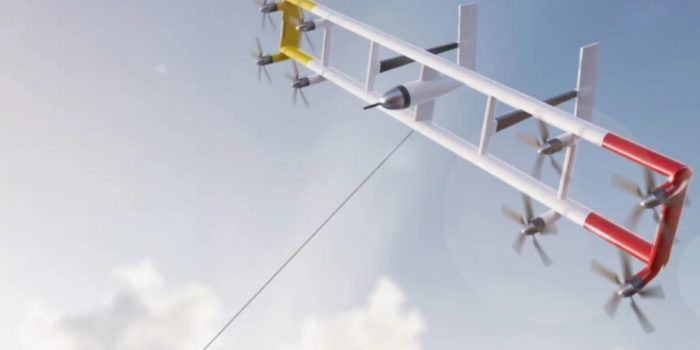A “major milestone towards our first 100kW product” is what was written on the German startup Kitekraft website, citing the progress made on the flying turbines after their latest round of testing. The company is endeavoring to develop flying wind turbines that require ten times fewer materials than traditional wind turbines.
Kitekraft explains that the significant difference between their turbine and a traditional wind turbine is that they use a tether instead of a massive tower, which cuts the cost. It also reduces the carbon footprint. The company has recently completed a stay at tech accelerator Y combinator and came up with an autonomous hybrid kite aircraft that creates energy via eight small onboard rotors. The tether then sends the energy generated to a station on the ground, which is further attached to the grid.
The company boasts proudly that their flying turbine generates energy equal to the tip of a wind turbine’s blade, the fastest-moving part of the turbine, with a meager amount expended on infrastructure compared to traditional turbines.
Last year, during an interview with FastCompany, Kitekraft co-CEO Florian Bauer also explained that the tech can be used elsewhere. “You just need a ground station for the kite like a floating buoy,” he said. “There’s no foundation required, like a huge tower that goes to the seafloor.” The best part is that if the wind gets too strong, the kites can be simply lowered, and damages can be averted.
After the autonomous test flights of the kites last year, Kitekfraft’s other co-founder, Max Isensee, said, “we are continuing our steps toward the final product design. The tests mean that several new systems are now flight-proven, including a custom-designed high-lift multi-element airfoil, a magnet-based wind vane, and industrial Linux flight control computers. Isensee explained that the company can now increase its test flight frequency” and that “in the coming weeks, further hardware and software improvements, as well as flight tests, are scheduled to further push the envelope.”

For starters, the company wants to deploy its turbines at a place where it is difficult to transport the infrastructural requirements of a wind turbine. In a blog from September last year, Bauer said that “Kitekraft was taking up the mantle of another firm called Makani. Makani had worked on a now-discontinued flying turbine project, and it decided to release thousands of pages of technical documents as opensource resources once it decided to no longer pursue its development of the technology.” As Bauer further stated, “this is a testament to the mission-driven.”


